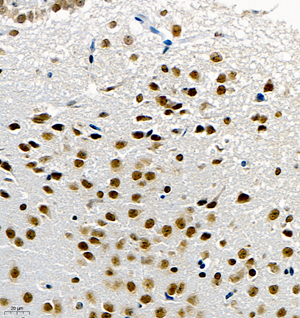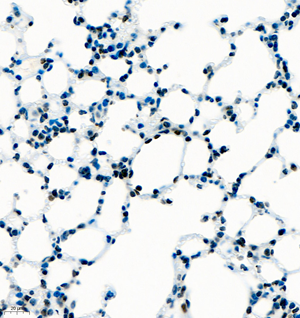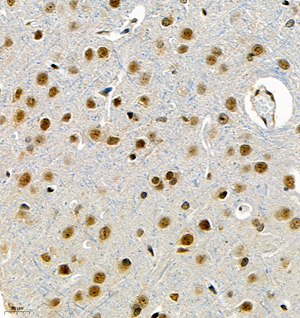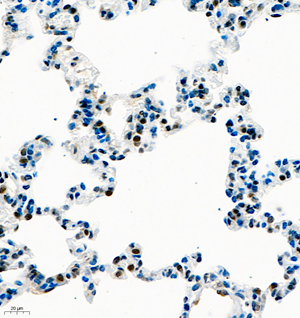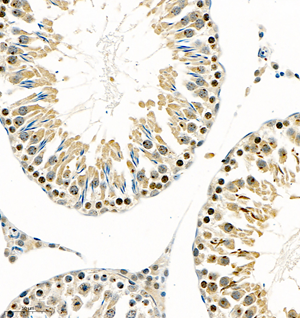Anti-UBE3A Rabbit pAb (100 μl)
| Reactivity: | M,R |
| Applications: | IHC/IF |
| Host Species: | Rabbit |
| Clonality: | Polyclonal |
| Full Name: | UBE3A rabbit polyclonal antibody |
Gene Name: | Ubiquitin-protein ligase E3A |
Synonyms: | HECT-type ubiquitin transferase E3A, Oncogenic protein-associated protein E6-AP, Ube3a, Renal carcinoma antigen NY REN 54, HPVE6A, FLJ26981 |
Immunogen: | KLH conjugated Synthetic peptide corresponding to Mouse UBE3A |
Isotype: | IgG |
Purity: | Affinity purification |
Subcellular location: | Cytoplasm, Nucleus |
Uniprot ID: | O08759 |
Applications
Applications | Species | Dilution | Positive Sample |
IHC/IF | Mouse, Rat | 1: 1000-1: 2000 | brain, lung, spinal cord, testis |
Background
UBE3A (ubiquitin-protein ligase E3A, AKA E6AP) is an E3 ubiquitin-protein ligase which accepts ubiquitin from an E2 ubiquitin-conjugating enzyme in the form of a thioester and transfers it to its substrates. Several substrates have been identified including the ARNTL/BMAL1, ARC, RAD23A, RAD23B, MCM7, annexin A1, the PML tumor suppressor, and the cell cycle regulator CDKN1B. Additionally, UBE3A may function as a cellular quality control ubiquitin ligase by helping the degradation of the cytoplasmic misfolded proteins. UBE3A also plays an important role in the regulation of the circadian clock. Defects in UBE3A are a cause of Angelman syndrome (AS).
Images
|
|
Immunohistochemistry of paraffin embedded mouse brain using UBE3A (GB111370) at dilution of 1:1000 (400x lens) |
|
|
Immunohistochemistry of paraffin embedded mouse lung using UBE3A (GB111370) at dilution of 1:1000 (400x lens) |
|
|
Immunohistochemistry of paraffin embedded mouse spinal cord using UBE3A (GB111370) at dilution of 1:1000 (400x lens) |
|
|
Immunohistochemistry of paraffin embedded rat brain using UBE3A (GB111370) at dilution of 1:1000 (400x lens) |
|
|
Immunohistochemistry of paraffin embedded rat lung using UBE3A (GB111370) at dilution of 1:1000 (400x lens) |
|
|
Immunohistochemistry of paraffin embedded rat testis using UBE3A (GB111370) at dilution of 1:1000 (400x lens) |
Storage
| Storage | Store at -20°C for one year. Avoid repeated freeze/ thaw cycles. |
| Storage Buffer | PBS with 0.02% sodium azide, 100 μg/ml BSA and 50% glycerol. |

